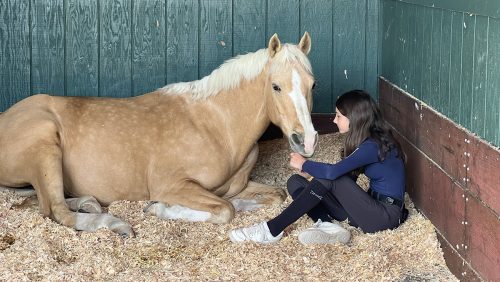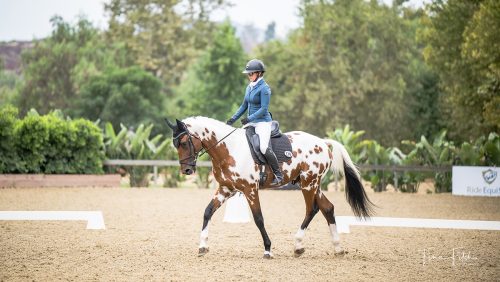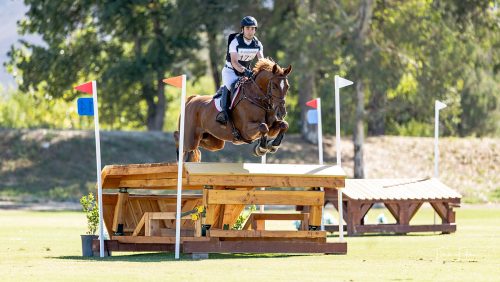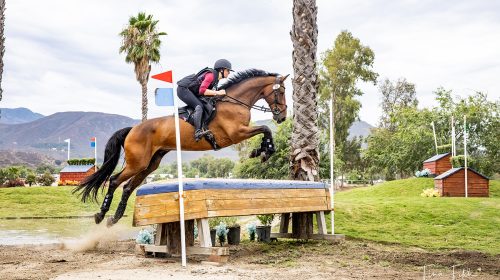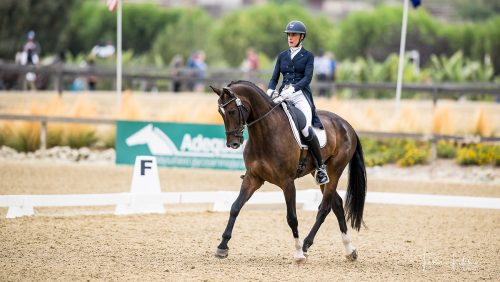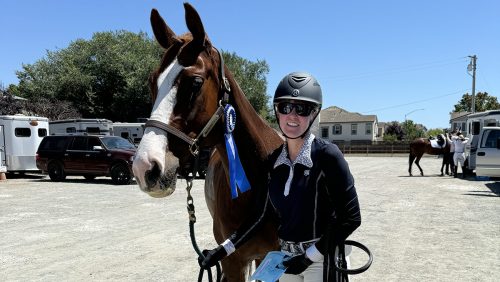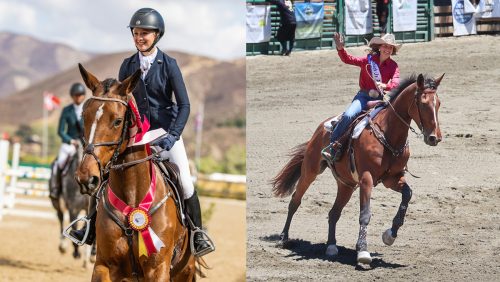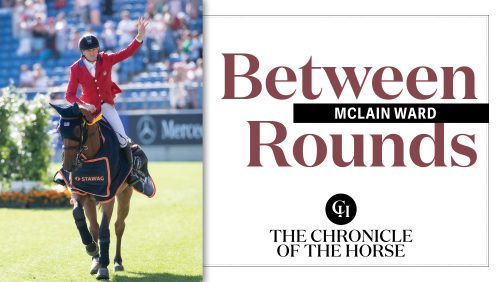In this two-part report, we are looking at the challenges eventing organizers face in recruiting and retaining enough volunteers to run their horse trials. In Part 1, we outlined what organizers have identified as the reasons for the growing problem. Today, we’ll look at what this volunteer crisis means for the future of the sport and possible solutions to the problem.
Facing a major crisis in their ability to find and retain the base of volunteers needed to run events, over the years, organizers and volunteer coordinators have gotten more and more creative with the incentives they offer to people who donate their time. There might be vouchers for cross-country schooling, prizes for the barns that log the most volunteer hours, branded swag like hats, T-shirts, mugs or umbrellas.
At Fox River Valley (Illinois), prime trailer parking spaces right in front of the stabling area were offered to those who committed to a certain number of volunteer hours, organizer Matt Trynoski said. (He noted that eight spaces were available; only two were claimed.
“I try to do a different lunch [for volunteers] every day,” said Emily Holmes, who organizes the Ocala International and Ocala I and II Horse Trials (Florida), in addition to being a U.S. Equestrian Federation technical delegate. “Sometimes it’s Tropical Smoothie, sometimes it’s Publix, sometimes it’s Wawa. And I actually do find that people are starting to contact me and ask, ‘What day are you doing Chick-fil-A?’ I’m serious, people literally sign up for that day. Not really what I was expecting!”

Jim Newman of Charlottesville, Virginia, was the USEA Volunteer of the Year in 2021, and he can be found volunteering at events all over Area II, usually as the cross-country starter. He’s also the area vice chair, and is a member of the USEA Volunteer Committee, which is currently working on a report about the volunteering crisis and what can be done to solve it.
“We had a big discussion about what can we do to better train the volunteers that we have now. And [secondly] what can we do to keep the volunteers that we have now,” he said. “Quite frankly, we never have a great growth in volunteer population, and now we’ve had a great decrease. So now we’re trying to get it back up to even, so to speak. So what we decided to do is, one, do a pilot program in Area II where we find out what we can do to better encourage and nurture and support the volunteers.”
As a gold standard and model for other events, Newman pointed to Loch Moy Farm in Adamstown, Maryland, and farm owner Carolyn Mackintosh, who is also one of the founders of the USEA Volunteer Incentive Program. (Started as a pilot program in Area II in 2016, VIP uses the EventingVolunteers app and website to match interested volunteers with open positions, and also tracks their volunteer hours on a leaderboard for year-end awards.) Loch Moy hosts recognized horse trials, including the Maryland International, as well as dressage shows and a Twilight Eventing series.
“The first thing you see [at Loch Moy] when you go in the driveway is [a sign reading] ‘Celebrate a volunteer.’ As you drive up the driveway, ‘Congratulate a volunteer.’ ‘Say hello to a volunteer.’ And it’s throughout the property,” Newman said. “You want to get thrown off that property in a heartbeat? Say something nasty to a volunteer. When you’re sitting behind a desk, or you’re out as a jump judge, or you’re a dressage scribe, every hour someone will go by and offer you chips, a cold drink, candy. ‘What do you need? Can I get you something?’
“Loch Moy, in my mind, is the most professional and well-run event and volunteer organization in the country,” he continued. He added that Mackintosh makes a point of walking around and thanking each volunteer personally.
Making The Experience Positive
One of the major reasons volunteers don’t come back is because they don’t feel valued, Newman said. “They don’t feel appreciated. And in some instances, they don’t feel that they’re being treated fairly.”
Another major impediment is that volunteers are apprehensive about the jobs they’re being asked to do and feel unprepared or even intimidated.
“A lot of the people that initially volunteer from Pony Club, how are they going to judge or correct or supervise an Olympic rider? How’s that going to happen?” Newman asked. “With five minutes of instruction after watching a jump judge video, are they going to be put out by themselves at Jump 15, and the only person that interacts with them is the lady who comes around in a cart and says, ‘Do you want a Pepsi and a bag of chips?’ They kind of feel isolated and alone.”
The USEA Volunteer Committee is planning a pilot program in Area II to address this. Interested volunteers will be paired with experienced mentors to learn more about the ins and outs of a particular volunteer position, to learn what can’t be covered in a 10-minute video or a Saturday morning briefing.
ADVERTISEMENT
“As part of that briefing, they’re going tell you like 100 other things. So two hours later when you’re out on course, and you’ve got to stop a horse, you’re gonna forget most of that,” Newman said. “It really takes someone who’s done jump judging, who stopped a horse 20 times before they really get comfortable with it.
“We’ve set up a group of mentors who have done this a number of times, and we’re going to start roaming around the area and inviting volunteers who are interested for a couple of beers at a local place and just do lectures and commentary about jump judging or finish timing or starting,” he added. “We think this mentoring will help, these lectures will help. But secondly, where it’s possible, we go out of our way to take someone that’s new [volunteering at an event] and match them with someone who’s done that job for a year or two.”

Time And Money
In some of the areas with crowded competition calendars, like Areas II and III, most people compete close to home, and most levels run all three phases in a single day. So competitors are in and out in just a few hours, leaving less spare time for volunteering. But in other areas of the country, where people travel from farther distances and stable at the venue for a couple of days, the situation isn’t really any better.
Jim Moyer, of Gig Harbor, Washington, was the 2023 USEA Volunteer of the Year, clocking 687 volunteer hours at 10 different events in Areas VI and VII. He travels with his Weimaraner in a motor home and will spend up to two weeks at a competition, helping with the prep work beforehand and then volunteering at the event itself.
“I think it’s harder anymore. There are people that are organized enough that can [volunteer and compete],” he said. “But, you know, for most people, they’re not organized enough; they have to care for their horse; they have to walk their courses; they have to ride their horse. Trying to put time together to volunteer isn’t easy.
“And the same with their family. Twenty years ago, the family would come, and one of the parents could volunteer. Now, with the remote working stuff, you see a lot of the parents on their computers and their telephones, working at the events. So they don’t have time.”
Looking To The Pros
As the sport has become more professional, with trainers bringing multiple horses to ride and multiple students to coach, time is money. Holmes said that in years past, professionals would sign up for a few hours of volunteering when they picked up their pinnies but no longer.
“So, to me, right now, it’s a bit of an elitist sport that’s riding on the back of unpaid labor, of volunteers. It’s the same people volunteering over and over and over again. It’s very rarely new people. And it’s very rarely riders,” she said.
Professional riders are focused on their own businesses and making a living, but that will become harder if positions currently filled by volunteers have to be paid. But Trynoski noted that they’re the ones who can set the example of what it means to be part of the eventing community.
“I think, when you have a lot of big-time professionals there, they need to step up and do more with promoting the volunteering. They’re the ones that people are listening to and watching,” he said. “You definitely have a few that are willing to jump in, and they will lend a hand, but you have some of these people that are riding eight, nine, 10, 11 horses over the weekend. They’re not going to find time for volunteering with that many horses that they’re riding.”
But Trynoski suggested they could encourage volunteering among their students, perhaps offering a discount on coaching fees in exchange for a certain number of volunteer hours.

“I think personally, it needs to come from the coaches and the barns to say, ‘Look, if we want to continue doing this, we need to step up. We need to volunteer some hours,’ ” said Kari Randle-Bright, who manages the Texas Rose Horse Park Horse Trials in Tyler, Texas. In her own program, she expects it of her students, and her own daughter. “It’s easy to go volunteer for two to three hours. And if they don’t volunteer, then maybe they don’t get to go horse show. That’s part of it.”
ADVERTISEMENT
Jim Gehris of Midland, Virginia, who has been an eventing volunteer in Area II for about 20 years, noted the lack of younger people volunteering—but he also noted they’ll be the ones most hurt by the sport going in a more expensive direction.
“It seems to me that over the last 10 or 15 years, not only have the numbers [of volunteers] gone down a bit, but the volunteers for some funny reason are getting older,” he said. “But it seems like the more I got involved with it and more I got to know people, it’s always the same people volunteering. And their hearts are in it; they’re lovely people. But very few younger people. It seems to me, are coming out to volunteer.
“I think [volunteering] is important if people want our sport to continue the way it is and to be affordable for young, entry-level people,” he continued. “If we don’t provide a venue where that 14-, 15-, 16-year-old kid can come out and begin competing, in 20 years’ time, where are we going to get an Olympic team? Where’s our sport going to go if we don’t have that?”
It’s important not just for the future of the sport, but also for keeping kids involved in horses so they can reap all of the benefits—empathy, responsibility, teamwork—that come along with it, he added.
Another often-overlooked aspect of volunteering is that it’s a free opportunity to learn more about the sport. Want to learn how to improve your dressage test? Sit next to a dressage judge for eight hours and scribe. Want to learn about cross-country course design? Help get the course ready in the days before the competition.
“Just spend a day in the show office. The things you learn in the show office are unbelievable. You want gossip? We’ve got gossip!” joked Holmes. “There are just so many different things that you can learn.”
‘It’s Not Hard To Be Nice’
Although it seems so obvious as to not need to be mentioned, every single person interviewed for this story mentioned the problem of riders being rude to volunteers, and how it’s the quickest way to ensure a volunteer won’t come back. So one thing that every single participant in the sport can do to promote volunteerism, even if they can’t volunteer themselves, is to simply be nice.
“It’s not hard to be nice. And some people really, really, really struggle with it,” said Holmes. “There needs to be more understanding of the volunteers. I had one very, very well-known person complain to me, ‘I’m so sick of being told to be nice to the volunteers.’
“It’s not hard to be nice. And some people really, really, really struggle with it. There needs to be more understanding of the volunteers. I had one very, very well-known person complain to me, ‘I’m so sick of being told to be nice to the volunteers.’ ”
Emily Holmes, horse trials organizer
“It doesn’t matter where you are, or who you are, you can be nice to the person who gave up their day to run the in-gate, so that you can make money riding a horse and training your client,” she added. “One would think that would be relatively easy, but let me tell you, a lot of people struggle.”
The technical delegates play an important role in making sure volunteers are treated well. Holmes recalled one professional rider who was given a choice by the TD after chewing out the 15-year-old girl running the show jumping warm-up: He could either accept a yellow card, or he could do community service and fill the same position at an upcoming event. He chose the latter.
“He did a great job. And he was exhausted at the end of the day,” said Holmes. “And I really think it made a huge difference in how he perceives the volunteers. A lot of the professionals, they’re so far removed from that side of the sport because they do compete to make money. They need to make a living, and I totally respect that. But if we don’t have volunteers, we also don’t have a sport.”
Click here to read Part 1 of this story, which originally appeared in the June 2024 issue of The Chronicle of the Horse. You can subscribe and get online access to a digital version and then enjoy a year of The Chronicle of the Horse. If you’re just following COTH online, you’re missing so much great unique content. Each print issue of the Chronicle is full of in-depth competition news, fascinating features, probing looks at issues within the sports of hunter/jumper, eventing and dressage, and stunning photography.






